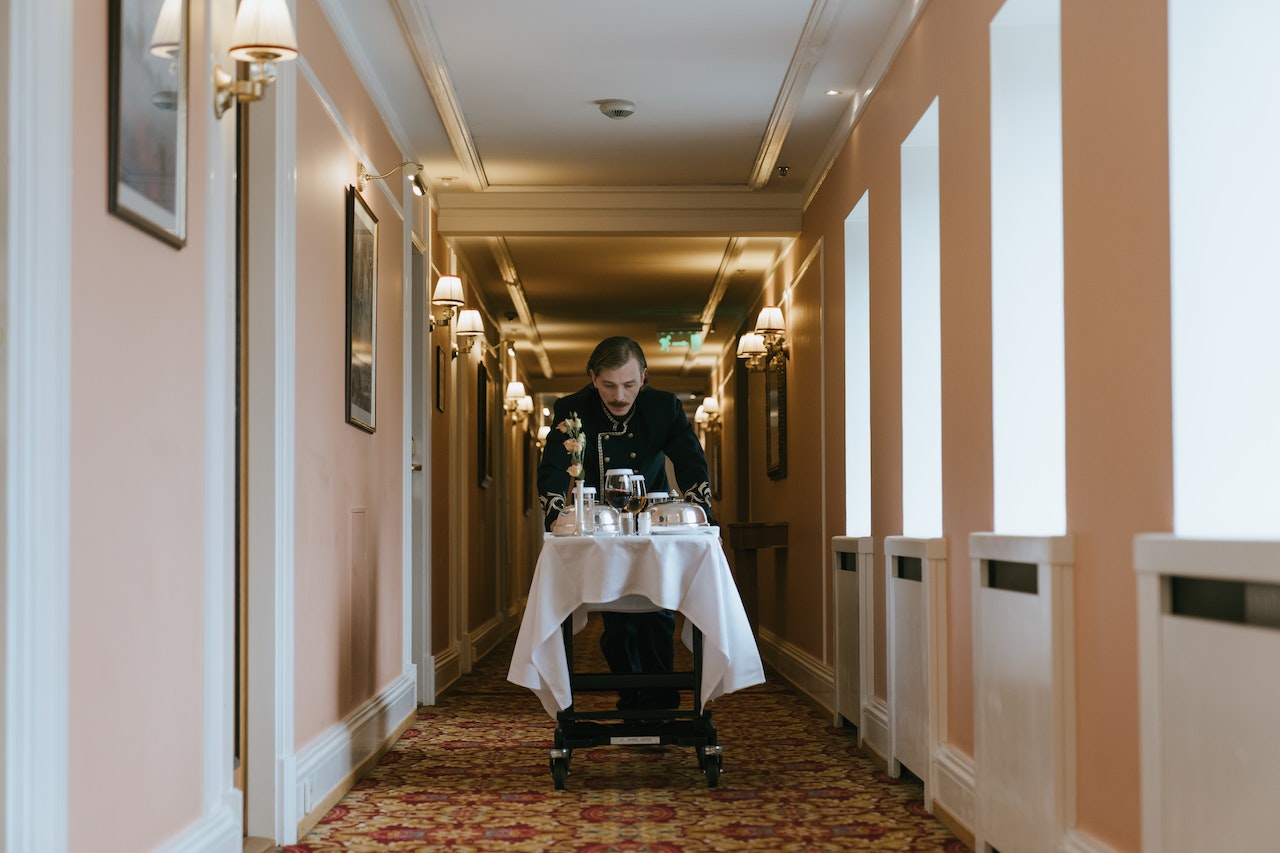How to use the Concierge Service business model to validate your business?
Have you ever stayed at a luxury hotel and been impressed by the exceptional level of service you received? The kind of service where someone anticipates your needs and makes everything happen seamlessly?
Well, that’s the basic idea behind the concierge business model.
The concierge service business model has gained popularity in recent years, thanks to its focus on providing personalized service to clients.
From travel planning to event coordination to personal errands, concierge services aim to anticipate the needs of their clients and deliver exceptional customer satisfaction.
This approach can be applied to a wide range of industries, making it a versatile business model that can be adapted to suit different markets and niches.
In this article, we’ll explore the ins and outs of the concierge service business model, including how it works, how concierge services make money, and examples of successful concierge businesses.
We’ll also take a look at how startups can use the concierge approach to validate their idea and build a loyal customer base.
Whether you’re a seasoned entrepreneur looking to expand your business or a newcomer to the startup world, understanding the concierge service business model can help you provide exceptional service and stand out from the competition.
What is a Concierge?
In simple terms, a concierge is a person or service that takes care of your needs.
Traditionally, concierges were found in hotels, but these days, there are concierge services for everything from grocery shopping to event planning to travel arrangements.
What is a Concierge Business Model?
The concierge business model is based on providing personalized service to clients. The focus is on anticipating their needs and delivering a high level of customer satisfaction. This approach can be applied to a wide range of industries, from healthcare to real estate to travel.
How do Concierge Services make money?
There are a few different ways that concierge services make money.
Some charge a membership fee, while others charge per service or per hour. Some concierge services receive a commission for products or services they recommend to clients.
How does a Concierge Service work?
The process of using a concierge service can vary depending on the provider. In general, though, you’ll start by contacting the service and explaining what you need.
The concierge will then work with you to understand your preferences and requirements. They’ll use their expertise and connections to find the best solutions for you, and then they’ll present you with options to choose from.
Once you’ve made your decision, the concierge will take care of the rest, handling all the details so you don’t have to.
Examples of Concierge Services
There are many different types of concierge services available today. Here are a few examples:
- Personal concierge services: These services can help with anything from grocery shopping to house cleaning to pet care.
- Travel concierge services: These services can help with travel planning, from booking flights and hotels to arranging activities and transportation.
- Event planning concierge services: These services can help with everything from finding a venue to coordinating vendors to managing the event itself.
Using Concierge Services to Build an MVP and Validate a Startup Idea
If you’re an entrepreneur looking to validate a startup idea, using a concierge service can be a smart move.
By providing a high-touch service to a small group of clients, you can learn a lot about their needs and preferences.
You can use this information to refine your idea and develop a more targeted product or service. Plus, by providing exceptional service, you’ll build a loyal customer base that can help you grow your business.
here are a few examples of startups that used the concierge business model to validate their idea:
- Airbnb
When Airbnb first started out, they had a simple idea: to help people rent out their spare rooms to travelers. But instead of building a platform and waiting for people to sign up, the founders of Airbnb decided to use a concierge approach.
They went door-to-door in New York City, taking photos of apartments and creating listings on the Airbnb website.
They also provided cleaning and key exchange services for hosts who were uncomfortable doing it themselves. This allowed Airbnb to test the market and validate their idea before investing in a full-blown platform.
- Zappos
Before becoming the online shoe giant we know today, Zappos started out as a concierge service for shoe shoppers.
Founder Nick Swinmurn would visit local shoe stores to find the perfect pair of shoes for his clients. He would take photos of the shoes and email them to the customer, who could then choose whether or not to buy them.
This approach allowed Zappos to validate the demand for their service and build a loyal customer base before launching their e-commerce platform.
- MealPal
MealPal is a subscription service that allows customers to order lunch from participating restaurants at a discount. But before launching the platform, MealPal used a concierge approach to validate their idea.
They started by partnering with a few local restaurants and taking orders by phone. They would then manually place the orders with the restaurants and deliver the meals to customers. This allowed MealPal to test the demand for their service and fine-tune their offering before investing in a full-blown platform.
- TaskRabbit
TaskRabbit is a platform that connects people who need tasks done with local service providers who can help.
But before launching the platform, TaskRabbit’s founder Leah Busque started out by providing the service herself. She would take requests by email, find service providers to complete the tasks, and then follow up with customers to ensure they were satisfied.
This hands-on approach allowed TaskRabbit to validate the demand for their service and fine-tune their offering before scaling the business.
- Instacart
Instacart is a grocery delivery service that allows customers to order groceries online and have them delivered to their doorstep.
But before launching the platform, Instacart’s founder Apoorva Mehta used a concierge approach to test the market. He would take orders by phone, go to the store to buy the groceries himself, and then deliver them to the customer.
This approach allowed Instacart to validate the demand for their service and build a network of loyal customers before investing in a full-blown platform.
- Hello Alfred
Hello Alfred is a personal concierge service that provides a range of home management services, from house cleaning to grocery shopping to package delivery.
But before launching the platform, Hello Alfred’s founder Marcela Sapone started out by providing the service herself. She would visit clients’ homes and provide personalized assistance with their daily tasks.
This approach allowed Hello Alfred to validate the demand for their service and fine-tune their offering before scaling the business.
These are just a few examples of startups that used the concierge business model to validate their idea.
By providing a high-touch service to a small group of customers, these startups were able to test the market and build a loyal customer base before investing in a full-blown platform.
In conclusion, the concierge business model can be a valuable tool for startups looking to validate their idea. By providing a high-touch service to a small group of customers, startups can learn a lot about their needs and preferences.
They can then use this information to refine their idea and develop a more targeted product or service.
Check out some of our other business model posts below:
- Thrasio – How the Thrasio model is generating a new wave of startups & attracting billions in venture capital?
- What is a stealth startup and should your startup be in stealth mode?
- Fractional ownership – A hot business model that is driving disruptive startups
- What is the content to commerce business model?
- Data monetisation as a revenue strategy for apps
- How to build a successful short video app like TikTok?




